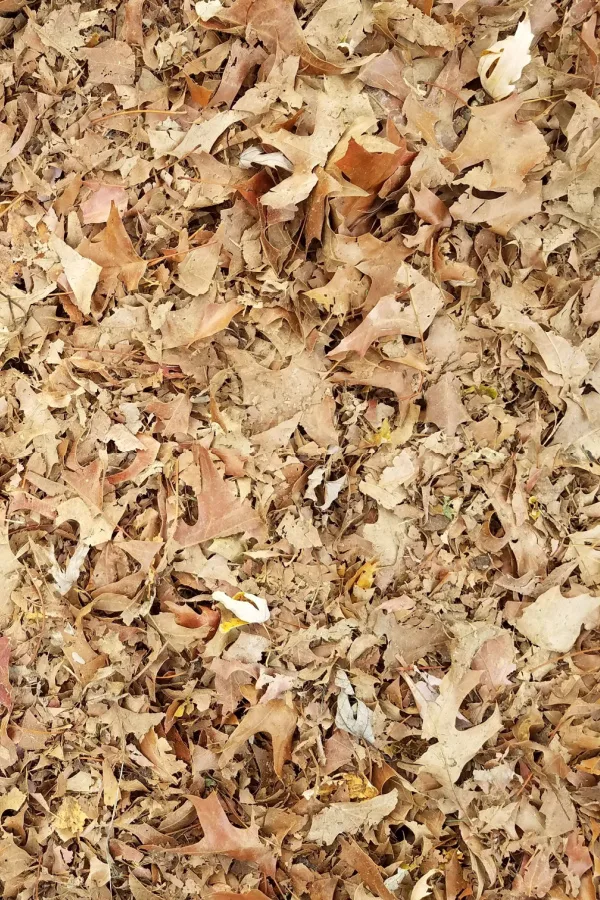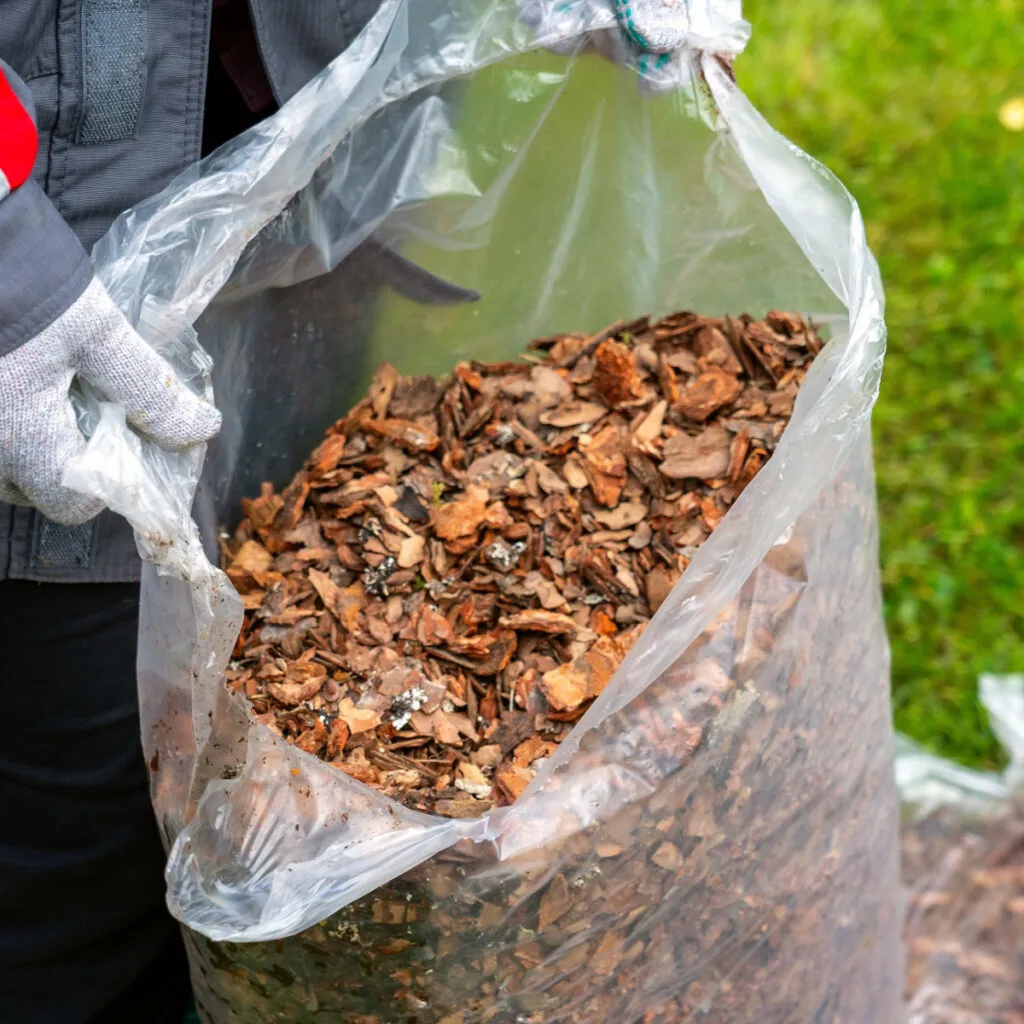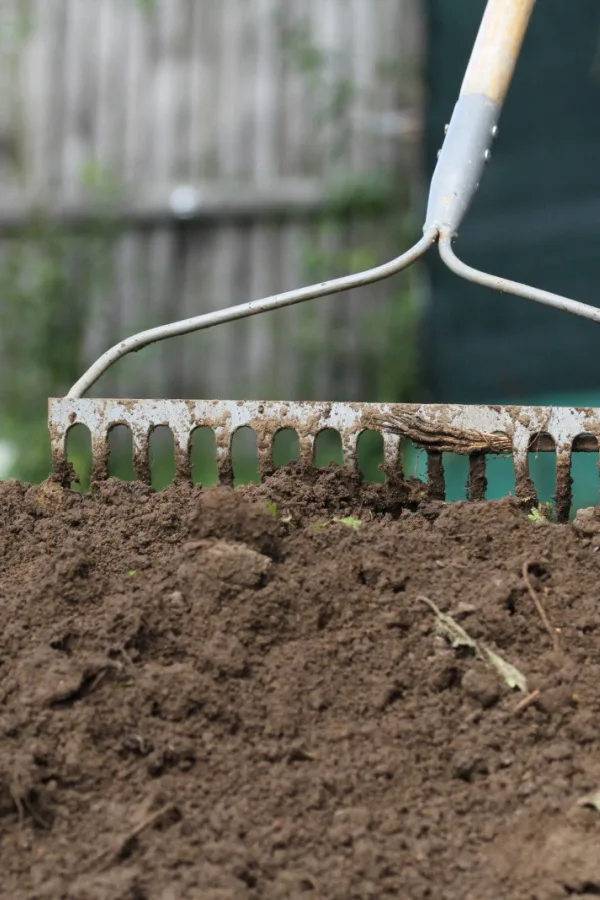Did you know that one of the easiest and most economical ways to protect and recharge your garden and its tired soil over the fall and winter months is with leaves?
Autumn certainly brings a bounty of leaves. Leaves that many gardeners see as nothing more than hard work that require hours of raking and disposal. But what if, instead of viewing all of those leaves as waste, you could put them to great use in your garden?
As it turns out leaves can be one of the best, natural resources for covering your garden soil from winter erosion and nutrient loss. And while they protect it – they can also enhance your soil’s structure, fertility and its ability to hold moisture in as well.

Why Leaves Are Valuable – How To Recharge & Protect Your Garden With Leaves This Fall
Leaves are essentially nature’s mulch and compost. As they decompose, they release all kinds of essential nutrients like nitrogen, phosphorus and potassium back into the soil. Nutrients that are all too often gone from the soil by the end of a growing season.
Leaves give so much more than just nutrients back to the soil. As they break down, they add humus to the soil, creating a healthier environment for beneficial microorganisms and earthworms to feed and work their magic as well. And perhaps best of all when it comes to leaves – they are free for the taking!
But one thing is for sure, to get all of that goodness from leaves for your garden – it’s not as simple as just piling up a bunch of leaves on the bare soil before in late fall.
Instead, you first need to make sure you are using the right leaves. As it turns out, some leaf varieties are far better to use than others in the garden. And beyond that, it’s just as vital to know how to use the leaves for maximum protection and power.
With that in mind, here is a look at how to use leaves on your garden’s soil this fall like a pro!

How To Recharge & Protect Your Garden With Leaves This Fall
Which Leaves To Use In The Garden & Which To Avoid
Not all leaves are equal when it comes to mulching and enriching garden soil. Some types are more beneficial than others, while there are a few varieties that you should avoid altogether as they can actually harm your soil and the plants you grow in them.
Among the best are maple, birch, ash and the leaves of fruit trees. These leaves are high in nutrients and break down relatively quickly, making them ideal for composting and mulching.
Oak leaves are okay to use but you do need to use them in moderation. Oak leaves are slower to decompose due to their higher tannin content. In addition, they are more acidic – and if you use too many they can change the pH of the soil. Because of this, a good rule of thumb is to use no more than 10 to 15% oak leaves in your garden.
You should avoid using black walnut and eucalyptus leaves. These leaves contain natural chemicals that can inhibit plant growth, making them unsuitable for the garden.
It’s also best to not use any pine needles when trying to build soil in the fall. They simply take too long to break down and also can lean to the acidic side. For more on this topic, see our article: Leaves To Avoid Composting – The Top 5 Varieties To Not Compost And Why!

Putting Leaves On Your Garden In The Fall – How To Recharge & Protect Your Garden With Leaves This Fall & Winter
Now that you know which leaves you can use, it’s all about using them in the best way to both power and protect your garden soil over the winter. And that all starts by shredding almost all of the leaves you put on your garden!
One of the most effective ways to incorporate leaves into your garden is to shred them first. Whole leaves put on thickly form a dense mat that blocks water and air from reaching the soil. Whole leaves also take an enormously long time to break down, making spring planting tough the following year.
There are several methods you can use to shred leaves quickly. Leaf shredders are certainly easy and effective to use if you have one. Probably the easiest way of all is to simply run over them with a lawn mower.
This can be done directly on your garden soil or using the mower’s bag attachment to collect the shredded pieces and then put them on your garden.
Once your leaves are shredded, it’s time to apply them to your garden beds. Begin by spreading a layer about three to five inches thick over the soil. This layer will provide several benefits to your garden soil.

First, as the leaves decompose, they slowly release nutrients into the soil, acting as a natural, slow-release fertilizer. The shredded leaves also help insulate the soil from temperature extremes. This reduces the risk of frost damage during the winter months.
Lat but not least, a thick layer of shredded leaves will act as a natural mulch. This is key in preventing weed seeds from germinating and reducing competition for nutrients.
Finishing With A Whole Leaf Top Layer – How To Recharge & Protect Your Garden With Leaves This Fall
Although you can simply leave the shredded leaves over the garden – they can often blow off from strong winter winds. This is where topping your garden off with a layer of whole leaves can help eliminate that issue.
Adding one to two inches of whole leaves serves as an additional protective layer. This will not only keep the shredded leaves in place, but also provide extra insulation for your soil. The whole leaves act as a windbreak, while the shredded leaves underneath are already beginning to decompose and enrich the soil.

Working With Leaves In Early Spring – How To Recharge & Protect Your Garden With Leaves This Fall
By the time spring arrives, much of the leaf mulch will have broken down into rich organic matter that has improved your soil’s fertility. You have two options at this point with the top layer of leaves.
If you’re preparing your garden for new plantings, you can lightly till the decomposed leaves into the soil. This helps incorporate the organic matter deeper, where plant roots can access it.
For those who prefer a no-till approach, simply rake off the whole leaves or mow over them and then plant directly through the remaining leaf mulch. This method preserves soil structure and encourages the growth of beneficial soil organisms.
Both methods will ensure that your soil is well-prepared for the growing season, full of nutrients, and ready to support healthy plant growth.
Here is to covering your garden this fall and winter with a rich, protective layer of leaves – and to a better garden than ever next year!
Simple Garden Life
Follow Our Facebook Page For Even More Great Tips! Simple Garden Life Facebook Page
Simple Garden Life is a website dedicated to keeping gardening fun, simple and enjoyable! We publish two new articles each week along with a new garden podcast episode every two weeks. This article may contain affiliate links.
